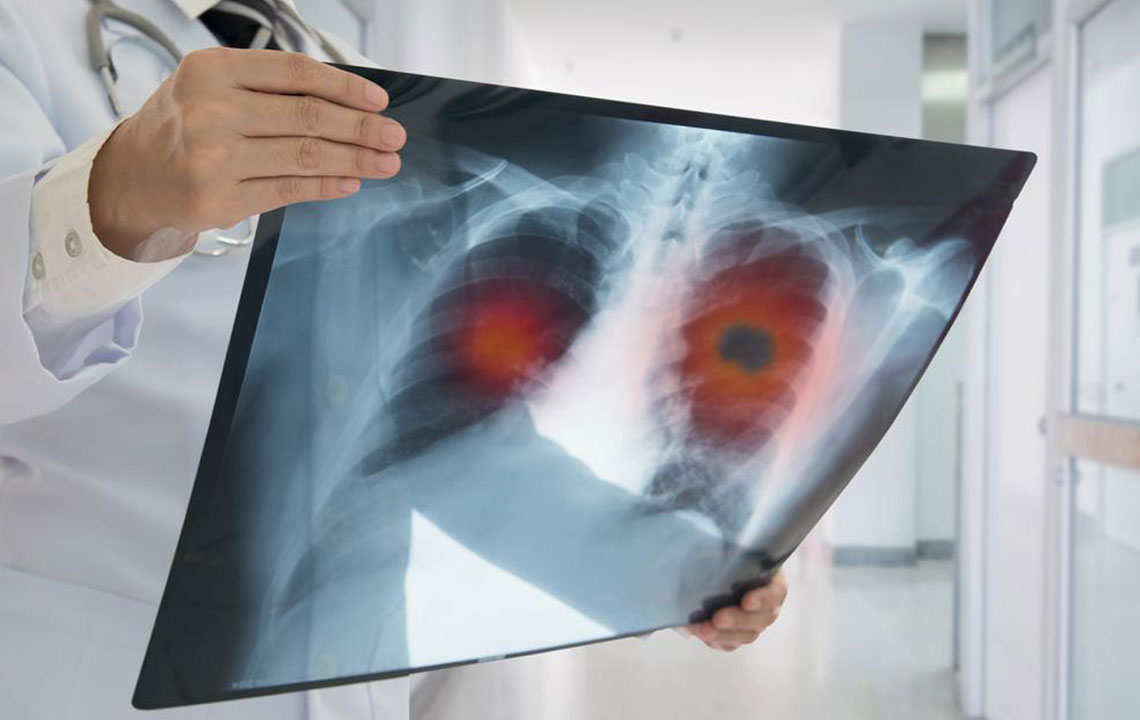Know the causes, symptoms, and treatment of non-small cell lung cancer

Cancer has afflicted a major chunk of the world’s population, especially in recent times. It is a condition that leads to the transformation of normal cells, such that they multiply or grow without control. Thereby, the inundated harmful cell growth causes the development of one or more tumors. Cancer can form or develop in any part of the body; when the malignant cells develop and are found in the lungs, it is called lung cancer.
Lung cancer is one of the most commonly prevalent types of cancer, and it affects both men and women. One of the major reasons attributing to lung cancer being a common phenomenon is that it is an organ that is highly exposed to the external environment. Non-small cell lung cancer is one of the two main types of lung cancer, which is a term that encompasses several lung cancers of the non-small cell type. The non-small cell types of cancer are grouped together since the treatment process adapted is often very similar.
Causes of non-small cell lung cancer
There are several triggering factors that are found to play a role in the development and growth of cancer cells. One of the leading cause of this cancer is the smoking of tobacco. As many as 90% of the cases are found to be triggered due to tobacco smoking. However, one must understand that not all people who smoke are the risk of developing non-small cell lung cancer. Factors such as genetics and air quality also play a substantial role. Passive smoking is found to be a potential cause of lung cancer.
Exposure to certain agents in the environment, i.e., nickel, cadmium, diesel exhaust, beryllium, and copper, have been found to contribute to the causes of non-small cell lung cancer.
Symptoms of non-small cell lung cancer
The symptoms of non-small cell lung cancer vary on the basis of the size of the tumor and its location in the lung. Moreover, it will differ from person to person. Some of the symptoms that are experienced by individuals with no-small cell lung cancer include a persistent cough, pneumonia, difficulty in breathing, pain in the chest, and recurrent respiratory infections.
Diagnosis and treatment for non-small cell lung cancer
Diagnosis of the condition in the initial stages is much easier and effective. Early-stage cancer is less likely to grow and metastasize; thus, it is essential to undergo evaluation by a medical professional who gathers information before diagnosing one with no-small cell lung cancer. Diagnosis is followed by several tests that aid in effective treatment.
The treatment of the disease largely depends upon its stage. Moreover, factors such as the characteristics of the lung cancer, the health of the lung, and the patient’s overall health play a role in determining the best treatment methods. Listed below are some of the treatment options that are commonly employed.
Surgery
If the non-small cell lung cancer is detected in the early stage, it can successfully be treated with surgery. The surgical procedure involves the removal of the lobe or the section of the lung containing cancer. In some cases, non-invasive surgical procedures such as video-assisted thoracoscopic surgery may be employed. This procedure involves the insertion of an endoscopic tube called a thoracoscope in the chest through a small incision. This enables the surgeon to remove the tumor without making a large incision.
Immunotherapy
Immunotherapy is one of the most recent treatment methods used for non-small cell lung cancer. It is still in the development phase as a non-small cell lung cancer treatment option and there is more research that is being undertaken; however, it has been found to show successful results. Nivolumab and pembrolizumab are FDA-approved immunotherapy options and are growing being used among patients. Immunotherapy continues to be used in early clinical trials.
Radiation and chemotherapy
Radiation and chemotherapy are the treatment methods that are typically used for treatment in the advanced stages of the lung cancer. In these stages, surgery may not help; therefore, it is essential that patient undergoes chemotherapy and radiation. The two therapies are used in combination, and the aim is to bring relief from the symptoms. In some cases, chemotherapy is prescribed as a post-surgery method, also known as adjuvant chemotherapy, to prevent the recurrence of the tumor.
Neoadjuvant treatment
For some patients suffering from non-small cell lung cancer, the physician may prescribe chemotherapy before conducting treatments such as radiation or surgery. This is a method directed toward the shrinking of the tumor, thereby making the surgery more effective. It may also be used to simply destroy the hidden cancer cells quickly and effectively. Neoadjuvant treatment is commonly used owing to the advantage that it brings, and it includes the ability of the doctor to immediately shift to other treatment methods in case it does not yield expected results.
Targeted treatments
Targeted treatment is yet another latest treatment method that is being used for non-small cell cancer treatment. As the name suggests, this form of treatment is designed to attack the unhealthy or cancerous cells in the lungs. Targeted treatment is revered as it does not cause harm to the healthy cells, which is the case for chemotherapy. Typically, targeted therapy is used in the advanced stages and may be used in combination with other treatment methods.